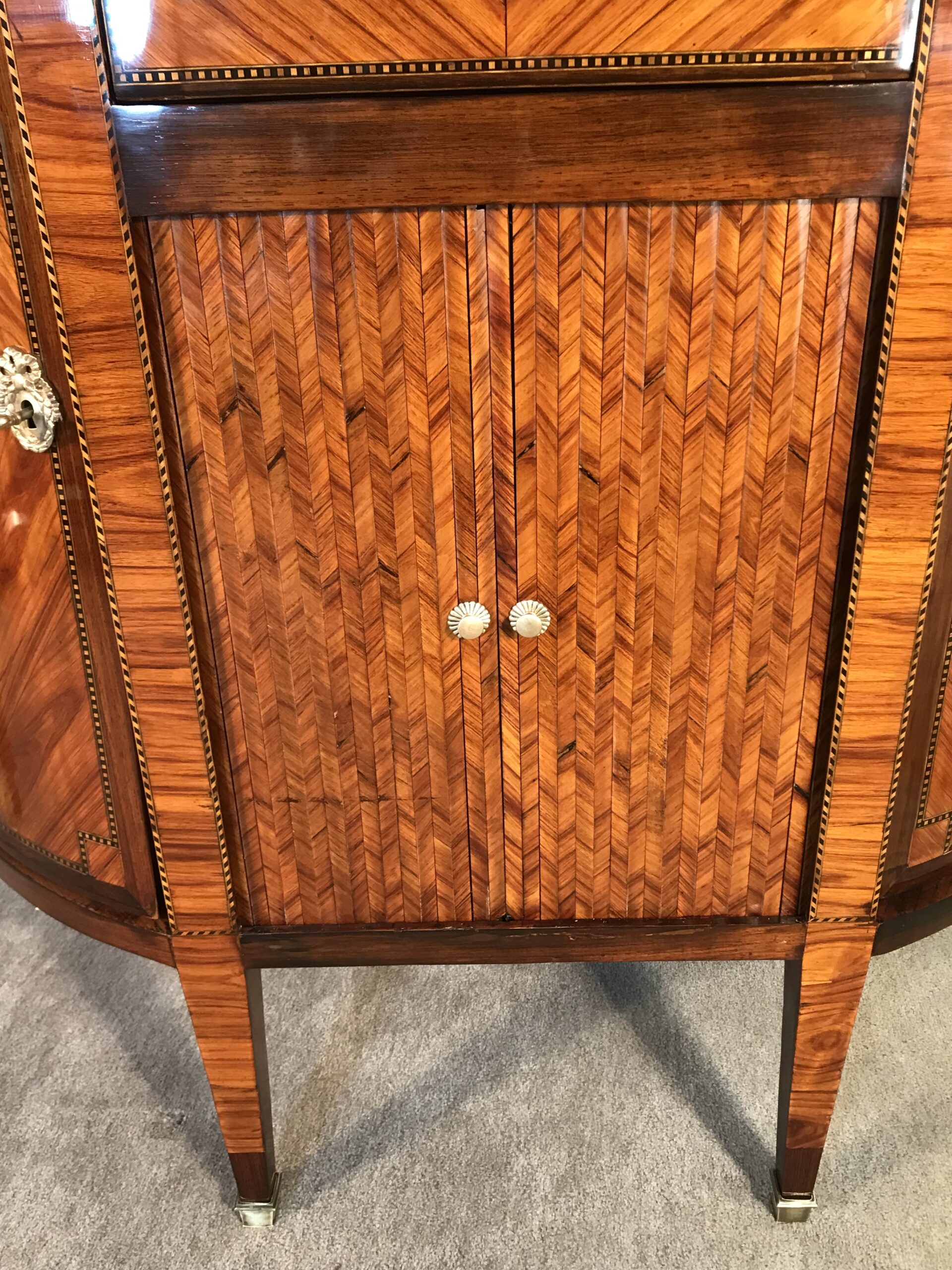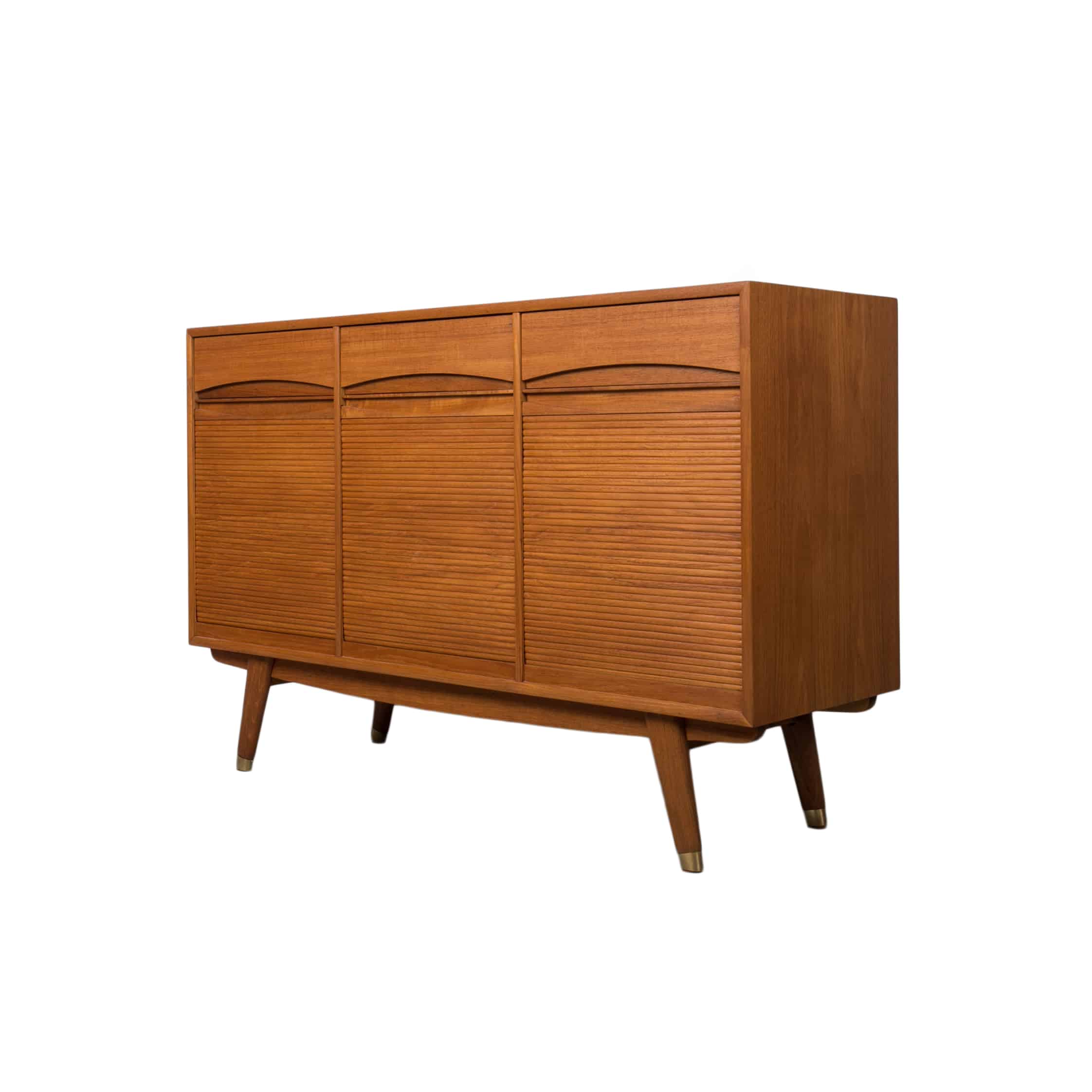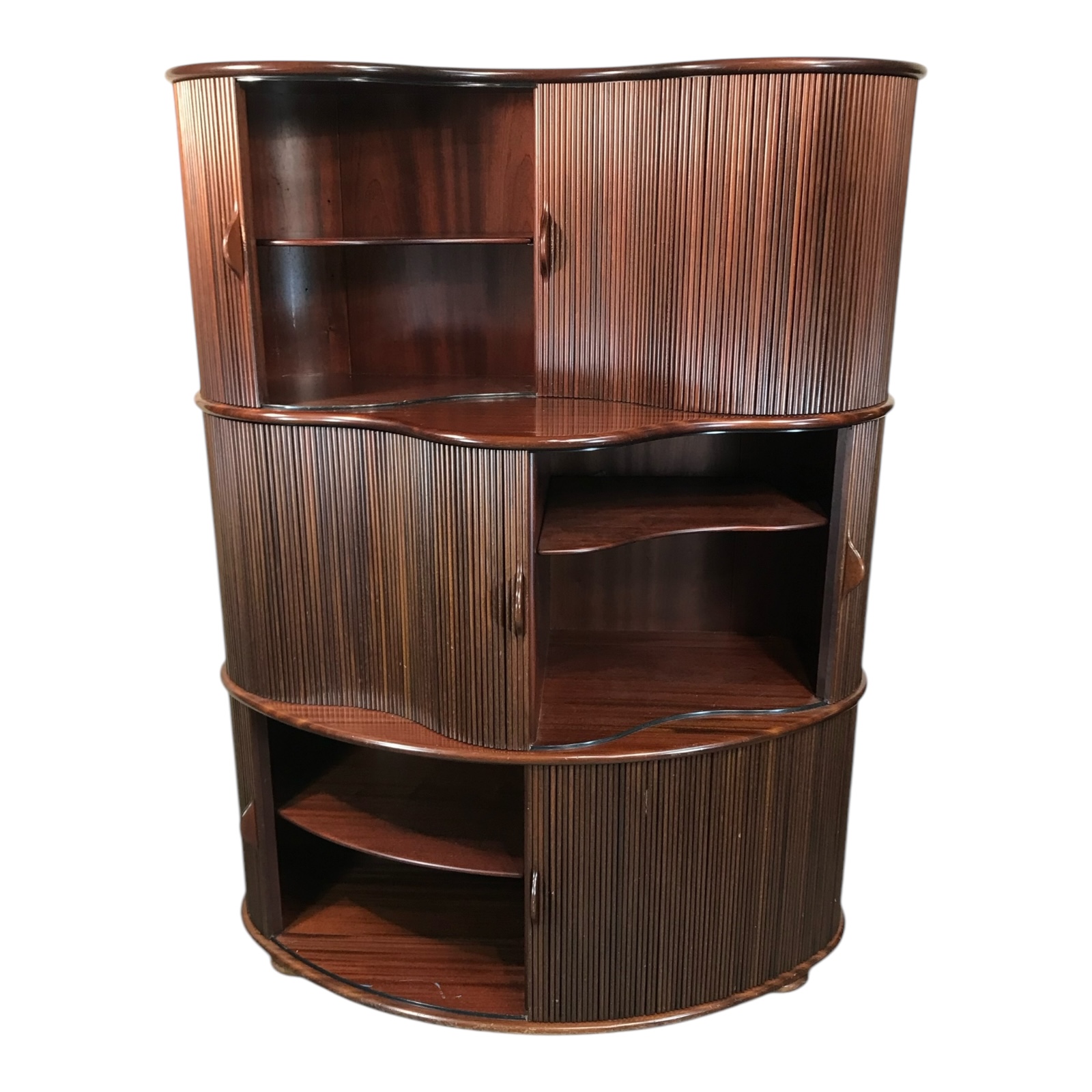#Tambour #Jalousie #Doors #Furniture #Design
From the elegant roll-top desks of the 18th century to sleek contemporary cabinetry, tambour and jalousie doors have played a crucial role in furniture design. These ingenious space-saving solutions not only enhance functionality but also add a distinctive aesthetic appeal. Whether in historic pieces or modern interpretations, their seamless movement and practical design continue to captivate designers and collectors alike.
The Origins of Tambour and Jalousie Doors
Roller shutter doors, also known as tambour doors, date back to the late 18th century. French and German cabinetmakers first incorporated them into desks, cabinets, and secretaries, allowing for a smooth, space-efficient closure mechanism. The design features narrow wooden slats mounted on a flexible backing, enabling the door to glide into a recess with minimal effort.
One of the most iconic applications of tambour doors is the roll-top desk, which gained popularity in the 19th century. These desks offered a secure way to conceal documents and personal belongings while maintaining an elegant, streamlined appearance.

Jalousie doors, on the other hand, feature angled slats designed to provide ventilation and privacy simultaneously. The concept originated in architectural elements such as window shutters but found its way into furniture, particularly in tropical and Mediterranean regions, where airflow was essential to protect stored items from humidity.
Craftsmanship and Materials: A Testament to Fine Woodworking


The construction of roller shutter and jalousie doors requires remarkable precision and craftsmanship. Traditional tambour doors are made from carefully joined thin wooden slats, often crafted from oak, mahogany, or walnut. These slats are attached to a flexible backing, such as cloth or canvas, which allows for smooth rolling into the housing compartment.
The curved channels that guide tambour doors must be meticulously shaped to ensure effortless movement without warping. High-quality antique pieces showcase the exceptional skill of 19th-century cabinetmakers, who often used veneers and inlays to add decorative elements to these functional components.
Jalousie doors, typically made from hardwoods like teak or beech, require precise angling of slats to allow for airflow while maintaining structural integrity. This design became particularly popular in colonial and Art Deco furniture, where both aesthetic appeal and practicality were valued.
The Functionality of Tambour and Jalousie Doors
Beyond their elegant craftsmanship, roller shutter and jalousie doors serve an important functional role in furniture design:
1. Space-Saving Elegance
Unlike traditional cabinet doors that require outward clearance, tambour doors slide or roll into the piece itself, making them ideal for compact spaces. This efficiency makes them particularly well-suited for writing desks, bar cabinets, and kitchen storage.
2. Secure and Concealed Storage
Roller shutter doors provide a discreet and lockable solution, making them a preferred choice for secretaries, office desks, and apothecary cabinets. Many antique roll-top desks feature built-in compartments and pigeonholes, adding to their organizational appeal.
3. Ventilation and Airflow
Jalousie doors excel in wardrobes, linen cabinets, and sideboards, where airflow is beneficial. By allowing air circulation, they help prevent moisture buildup and musty odors, making them ideal for warm climates or delicate textiles.


The Resurgence of Tambour and Jalousie Doors in Modern Design
While these door mechanisms have historical significance, they have also experienced a revival in contemporary furniture design. Modern designers appreciate the minimalist and seamless look that tambour doors provide, integrating them into:
- Scandinavian-inspired storage solutions, where clean lines and functionality are paramount.
- Luxury bar cabinets, offering a sleek and sophisticated way to conceal glassware and bottles.
- Kitchen cabinetry, where tambour doors allow for clutter-free countertops and easy access to appliances.
In addition, eco-conscious designers are reinterpreting tambour and jalousie doors with sustainable woods and innovative materials, ensuring they remain both stylish and practical.


Investing in Antique and Contemporary Pieces
For collectors and interior designers, tambour and jalousie furniture pieces represent a blend of historical craftsmanship and modern utility. Antique roll-top desks, Biedermeier cabinets, and Art Deco sideboards with these distinctive doors can serve as statement pieces in a room, adding both character and functionality.
When purchasing vintage or contemporary furniture with roller shutters, consider:
- The condition of the mechanism – Ensure the door slides smoothly without sticking.
- Material and craftsmanship – High-quality wood and precise slat alignment indicate superior craftsmanship.
- Historical authenticity – If buying an antique, verify its provenance and craftsmanship details.
Conclusion: A Design Element That Stands the Test of Time
Whether in an elegant 19th-century roll-top desk or a sleek modern cabinet, roller shutter and jalousie doors continue to offer a timeless combination of practicality and beauty. Their enduring appeal lies in their ability to provide functional storage solutions without compromising on design elegance. As these styles make their way back into contemporary furniture, they remain a testament to the ingenuity of past and present craftsmanship.
For those passionate about antique and modern design, integrating tambour or jalousie doors into an interior setting is a sophisticated way to honor the past while embracing contemporary aesthetics.
Looking for exceptional antique and modern furniture with tambour or jalousie doors? Explore our curated collection at styylish.com to find the perfect piece for your space.



